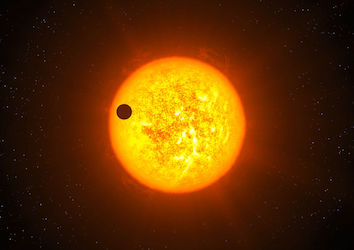Text and graphic features refer to elements outside of the main body of text. They may include titles, headings, images/photos, charts/tables, and many other things.
Here is an excerpt of a text that uses text and graphic features.
The Planet Hunters | | Artist's impression of exoplanet eclipsing its sun | | |  | | Transit Method of Identifying Exoplanets |
Is Earth, with its life-sustaining oceans, geology, and atmosphere, alone in space? Humans have always looked into the night sky filled with stars and planets, wondering about far-away worlds and extraterrestrial life. As of 2018, the answer is much clearer: Earth is not unique. Close to 4,000 exoplanets — planets that orbit stars outside of our own solar system — have been identified in space, and it is believed that there are many, many more. Most have been identified by the Kepler satellite launched by the National Aeronautics and Space Administration (NASA) in 2009. While Kepler's mission has come to a close, the search for planets that resemble Earth continues. In April of 2018, NASA launched TESS — the Transiting Exoplanet Survey Satellite — to take a closer look at some less distant exoplanets.
The means by which telescopes like Kepler and TESS detect distant planets is by using a technique called the "transit method." When a planet orbits its star and moves in front of it from the earth's perspective, a mini-eclipse occurs. While the planet itself may not be visibly detectable, the dimming of the star's light as the planet passes in front of it is detectable. Kepler's telescope was pointed in the same direction for many years, so repeated, periodic dimming of a star's light over that time period served to confirm that it was caused by an orbiting planet.
|


 8th Grade Reading - Author's Purpose & Message Lesson
8th Grade Reading - Author's Purpose & Message Lesson





